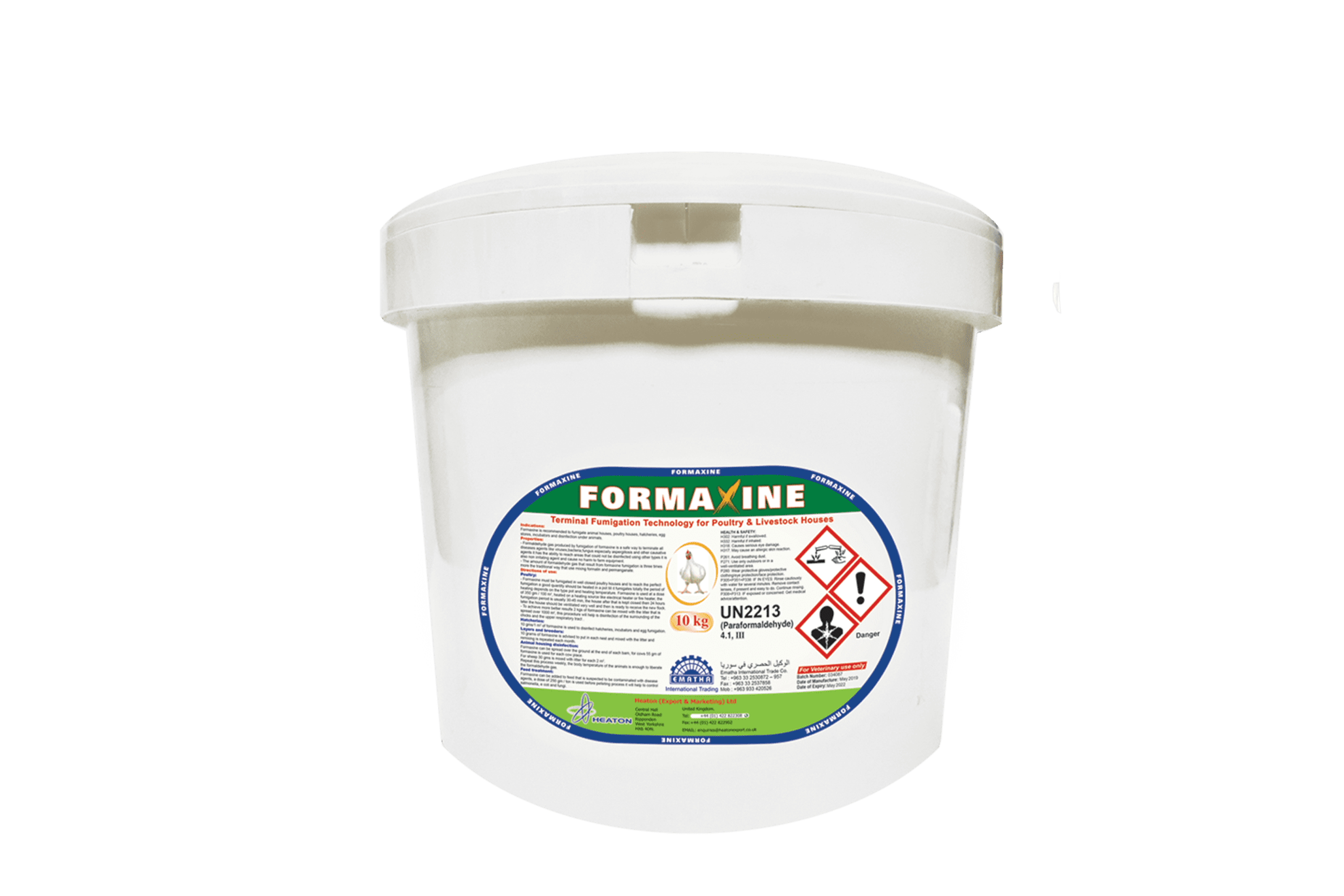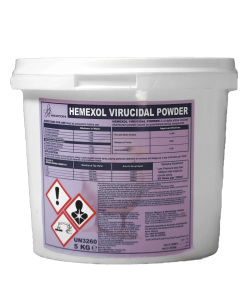Installation:
The formalin preparation is paraformaldehyde prills, a white granular substance that contains 90% formaldehyde, and it is a productive source of formaldehyde gas, which is a strong sterilization substance.
Usage recommendations:
It is recommended to be used for fumigating animal houses, poultry halls, hatcheries, egg rooms, incubators, and sterilization under animals.
Properties:
Formaldehyde gas is a safe way to kill pathogens in animal homes and has the ability to reach all sites in breeding halls that are difficult to reach by other means of sterilization.
It is a non-irritating substance, so it is not harmful to the equipment and the contents of the farms.
The use of Formaxin will inevitably eliminate viruses, bacteria, and fungi when used, and it is clearly effective against Aspergillus.
The amount of formaldehyde gas liberated from evaporating (sublimation) formalin is three times the traditional method that depends on dissolving liquid formalin with permanganate.
Instructions for use:
- poultry:
- hatcheries:
- Sterilizing animal bedding:
Formaxin is evaporated in sealed poultry houses to obtain the ideal disinfection by placing the material in a container and heating it until it evaporates. The heating period depends mainly on climatic conditions and temperature.
Foraxin is used at a rate of 350 g per 100 square meters, or 3.5 kg, per breeding hall with a capacity of 10,000 birds. It is placed on a heat source. Keep the treated area closed for 24 hours and then ventilate well.
In order to obtain the best results, the Formaxin can be mixed with the litter before the chicks descend at a rate of 2 kg per 1000 square meters so that there is a permanent evaporation of the substance by the heat of the birds’ body, which leads to the sterilization of the atmosphere surrounding the birds and the upper respiratory system.
Steaming eggs: Use 10 g per 1 cubic meter in a closed room.
Layer poultry and mothers:
It is recommended to put 10 g of Formaxin into the ovaries under each chicken and to be re-mixed at a rate every month.
Foraxin can also be mixed with the mattress at a rate of 2 kg per 1000 square meters, which effectively contributes to controlling respiratory diseases and arthritis.
- cows: The animals are taken out before sterilization, then 55 gm is sprinkled at the back of each chamber and mixed in the litter.
- Sheep: 28 gm is mixed in each barn at a rate of 2 square meters mixed with the mattress.
Re-treatment can be done at a weekly rate, as the animal’s body temperature is enough to release gas that will eliminate pathogens.
Foraxin can be added to feed suspected of contamination at a rate of 250 gm per ton of feed, as it helps to control feed contamination with pathogens.
Like: Salmonella, E. coli and types of fungi.
packing:
10 kg plastic can be re-sealable.


